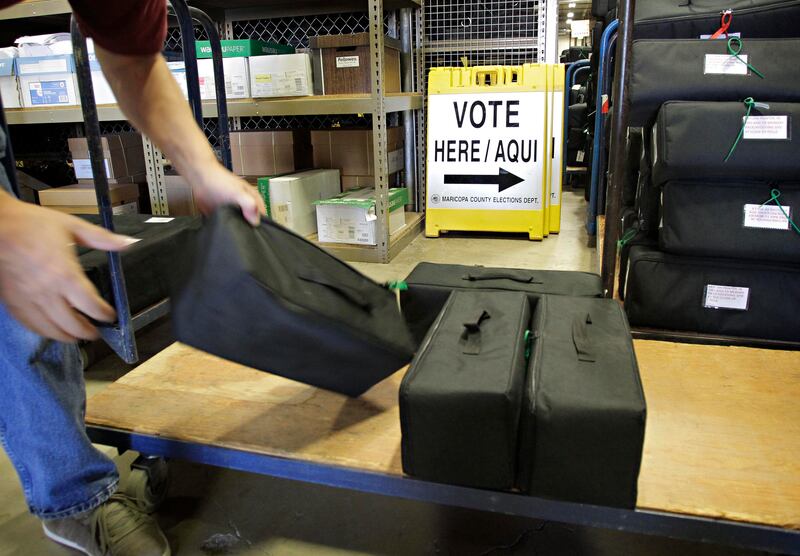Record breaking numbers of voters are casting their ballots early in this year’s midterm elections. Control of the U.S. Senate will come down to just a few seats in key battleground states, so parties are pushing their voters to show up. Democrats and Republicans both have reason to hope and despair as they try to read the tea leaves for their candidates based on who is showing up to vote.
Far more Americans vote early or by mail than used to, and more Democrats take advantage of early voting than Republicans according to historic trends. Early voting in 2020 heavily favored Democrats, while in-person voting helped Republicans.
But GOP registered voters are turning out in higher numbers than expected so far in states like Nevada and Florida, while the number of registered Democrats who have already voted in Arizona and Pennsylvania are similar to the numbers that helped President Joe Biden win those states two years ago.
Of course, voters don’t typically turnout in midterm elections at the same rate as they do in presidential election years. The relatively new changes in mass voting behavior leaves the early voting turnout numbers up for interpretation.
Pennsylvania
Registered Democrats who have taken advantage of absentee balloting or early in-person voting in the Keystone state are similar to the numbers who voted early two years ago. CNN reported that 70% of all early voting in the Keystone state comes from voters registered with the Democratic Party.
The increase in turnout may be due to Pennsylvania’s no-excuse voting by mail law which was introduced in the state in 2020. Young voters ages 18 to 21 make up a greater share of the total number of early voters so far, although they still account for no more than 3% of the current tally.
“It’s often the case that when you make voting easier, young people turn out more, Charlotte Hill, director of the Democracy Policy Initiative at UC-Berkeley told CNN. “That’s because many steps of the voting process are disproportionately difficult for young people. When you make those steps easier, everyone benefits, but especially those people who had a harder time in the first place.”
Arizona
At this point in the 2018 midterm elections, 39% of registered Democrats in Arizona had cast their ballots. Democrats ended GOP control of the U.S. House that year. This year they are sitting at similar levels while Republican early turnout numbers are roughly 13 points lower, dropping from 45% to 33%. Independent early voter turnout is roughly comparable to 2018.
Sam Almy, an election analyst in Arizona told the New York Times that Republicans will most likely end up voting. “They’re just going to show up at a different time in the election,” he said. “They’re taking this huge gamble on Election Day that they’re all going to show up at the polls to drop off early ballots or vote in person.”

Nevada
Early midterm voting in Nevada is showing warning signs for Democrats. A higher percentage of rural in-person voting is outpacing the urban share of totals. At this point in 2018, registered Democrats voting early outnumbered registered Republicans by nearly 3.7%. At this point Democrats only hold a 1% lead, according to The Nevada Independent.
Republicans aren’t seeing the same numbers as their 2014 red wave in the state. So far Democrats hold the edge, but only ever so slightly.
Voting trends in the state are difficult to track since only a few counties publish early voting numbers. Bottom line: the election outcome is far from determined. A snowstorm forecasted to hit Reno on Election Day might help decide which candidates inch past their competition.
Georgia
Voters in the Peach state are showing up to vote early in record numbers. As of Thursday morning, over 1.9 million voters had cast their ballots, a 25% increase over turnout at this point in the 2018 midterms. The state was expected to exceed 2 million early votes on Thursday, according to a statement by Secretary of State Brad Raffensperger.
“Georgia is the state where voters show up early, and our county election directors have created that infrastructure to make it a resounding success,” he said.
Nearly 68% of the absentee ballots that were issued have been returned to local county election offices. An absentee ballot is a mail-in ballot that was requested by the voter.
Georgia does not publish the registration of voters who have already voted.

